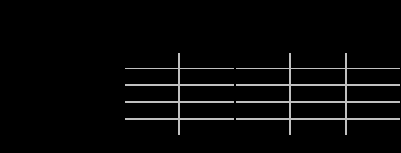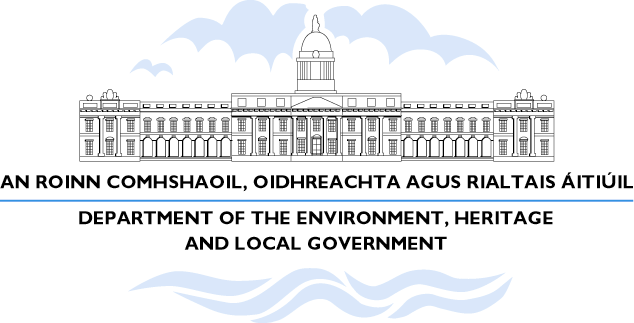MAKING CONNECTIONS THE PRESIDENT IN CHECK DIRECTIONS IN THIS
0 WARNING THE MAKING OF A FALSE1 “MAKING CITIES RESILIENT” WORLD DISASTER REDUCTION CAMPAIGN 201011
1 RUNNING HEAD MAKING SENSE OF NONSENSE WORD FLUENCY
11 MAKING POPULATION PYRAMIDS FOR DISTRICTS (AND WINNIPEG CASNCS)
13 DECEMBER 2016 THE RIGHTS OF COMMUNICATION AND MAKING
1848 WIS JI‑CRIMINAL 1848 1848 UNEMPLOYEMENT INSURANCE FRAUD MAKING
Making Connections:
Making Connections:
The President in Check
Directions: In this activity, your team will discuss the examples below, and analyze who and by what means the president’s power is checked. Please consider both formal and informal checks. There may be multiple checks involved. Record your answers on the graphic organizer provided.
In 1987, President Reagan nominated conservative federal appeals judge Robert Bork to the U.S. Supreme Court. A hotly contested Senate debate ensued fueled by strong opposition from civil and women's rights groups worried that Bork would vote to reverse key Supreme Court decisions like Roe v. Wade. TV ads sponsored by pro-choice interest groups like the National Organization for Women, coupled with intense media exposure aided in the failure of Bork’s confirmation in the Senate.
In a series of in depth reports, Washington Post reporters Woodward and Bernstein exposed the Nixon White House’s involvement in the Watergate break-in and cover-up. After an intensive bipartisan investigation and hearings, the House Judiciary Committee voted to recommend several articles of impeachment against President Nixon. With support in his own party weakening and public opinion against him, Nixon resigned the presidency on August 9, 1974.
With public opinion sagging to a new low following the Tet Offensive, President Johnson announced he would not seek re-election in 1968.
Republican leaders in the Senate opposed and successfully thwarted President Wilson’s efforts to gain ratification of the Treaty of Versailles and America’s entrance into the League of Nations after World War I.
George Washington established the precedent of serving no more than two terms in office, a tradition broken by FDR when he won his third term in 1940. Concerned that the president could become a “benevolent dictator,” threatening the separation of powers, Congress proposed an amendment in 1947 that would limit the president to 2 terms or 10 years. Presidents Eisenhower, Reagan, Clinton and now George W. Bush have been affected by these term limits.
Responding to both separation of powers concerns within the legislature and public discontent with how Presidents Johnson and Nixon prosecuted the war in Vietnam, Congress passed the War Powers Resolution in 1973. The WPR attempted to limit the President’s ability to wage war without the consent of Congress. The House and Senate were able to override President Nixon’s veto by a 2/3 majority. Since its passage in 1973, presidents have reported to Congress 118 instances under the War Powers Resolution. Congress has thus far given its consent to the president 100% of the time.
In 1952, the Supreme Court ruled that President Truman did not have the authority to seize steel mines during the Korean War.
In 1993, President Clinton proposed a comprehensive health care reform package including universal health care, an effort spearheaded by First Lady, Hillary Clinton. With a Democratic majority in both houses of Congress, passage initially seemed likely. The plan received significant opposition from interest groups (ex: insurance companies, the American Medical Association, National Taxpayers Union), powerful corporations (ex: General Electric, General Motors), and influential members of the Republican party like Newt Gingrich who helped to turn public opinion against the reform. Clinton’s plan ultimately died in Congress.
Riding the wave of public opinion to curb federal spending, Congress passed the Line Item Veto Act in 1996 that allowed President Clinton and his successors to “cancel” or “nullify” certain provisions of appropriations bills. However, the Supreme Court declared the law unconstitutional because it violated the separation of powers.
In 2002, organizations like the Center for Constitutional Rights challenged in court the Bush administration’s policy of detaining those identified as enemy combatants (i.e. those captured in Afghanistan, etc. believed to be members of the Taliban or Al Qaeda) indefinitely without access to a lawyer or a trial. In Rasul v. Bush (2004), the Supreme Court ruled that those held at Guantanamo Bay, Cuba may have access to the U.S. Court system to challenge their detentions.
|
Scenario |
Formal Check(s)/Rationale |
Informal Check(s)/Rationale |
|
#1 Bork Nomination |
|
|
|
#2 Nixon & Watergate |
|
|
|
#3 LBJ Re-election |
|
|
|
#4 Wilson & Treaty of Versailles |
|
|
|
#5 Term Limits |
|
|
Name(s):

|
Scenario |
Formal Check(s)/Rationale |
Informal Check(s)/Rationale |
|
#6 War Powers Resolution |
|
|
|
#7 Truman & Steel Mills |
|
|
|
#8 Clinton Health Care Reform |
|
|
|
#9 Line Item Veto |
|
|
|
#10 GWB & Detainees |
|
|
|
Scenario |
Formal Check(s)/Rationale |
Informal Check(s)/Rationale |
|
#1 Bork Nomination |
Art. II - “advice and consent” of judges of the Supreme Court (Senate)
|
Interest group influence – TV ads, protests Media – intense coverage of Bork Hearings, etc. Partisan Politics – Democratic majority in Senate thwarted President Reagan ® nomination of Bork to the Court Public opinion ran against Bork as too extreme
|
|
#2 Nixon & Watergate |
Art. I – impeachment power of the House
|
Media – watchdog role exposing Watergate break in & cover up; TV coverage of hearings Investigative role of Congress – House Judiciary committee investigation Public opinion against Nixon
|
|
#3 LBJ Re-election |
Art. II & 12th Amendment– President elected by Electoral College; indirectly by the People 22nd – Presidential term limits (2 terms; 10 years total)
|
Public opinion turned against LBJ Media – coverage of Vietnam; Walter Cronkite’s opposition to war after Tet Offensive
|
|
#4 Wilson & Treaty of Versailles |
Art. II – Senate must ratify treaties
|
Partisan Politics – Republican leaders in the Senate (Henry Cabot Lodge, Robert La Follette) worked to defeat Wilson and the Treaty
|
|
#5 Term Limits |
Art. I – primary function of Congress to make laws (proposed Constitutional Amendment) 22nd Amendment - Presidential term limits (2 terms; 10 years total)
|
|
|
#6 War Powers Resolution |
Art. I – power of Congress to make laws Art. I – Congress’s power to declare war Art. I – override presidential vetoes
|
Public opinion opposed to Johnson and Nixon’s handling of the war in Vietnam
|
|
#7 Truman & Steel Mills |
Art. III/Marbury v. Madison – judicial review by the Supreme Court
|
|
|
#8 Clinton Health Care Reform |
Art. I – primary function of Congress to make laws even if President proposes it Art. I – Congress’s power of the purse to fund programs or not
|
Interest group influence – significant impact on failure to pass health care plan Partisan Politics – key Republican leaders successfully led the charge against the reform as being too expensive and bordering on socialism Public opinion turned against the plan
|
|
#9 Line Item Veto |
Art. III/Marbury v. Madison – judicial review by the Supreme Court
|
|
|
#10 GWB & Detainees |
Art. III/Marbury v. Madison – judicial review by the Supreme Court
|
Interest group influence – Center for Constitutional Rights brought the lawsuit on behalf of a detainee
|
19 THE UNMAKING OF THE CHINESE PROLETARIAT THE POLITICS
2 MAKING CAPITAL INVESTMENT DECISIONS ESTIMATION OF PROJECT CASH
2013 RULEMAKING TCE MSC CALCULATIONS NOTES 1 THE GROUNDWATER
Tags: check directions:, making, directions, president, check, connections
- O’ZBЕKISTОN RЕSPUBLIKАSI OLIY VA O’RTA MAXSUS TА’LIMI VАZIRLIGI JIZZАХ
- MODELO DE ACTO CONSTITUTIVO PARA UNA SOCIEDAD ANÓNIMA CERRADA
- BAB II SISTEMATIKA PENULISAN PROPOSAL DAN LAPORAN SKRIPSI 21
- GALERIE AVU VÝZVA K PŘEDKLÁDÁNÍ VÝSTAVNÍCH PROJEKTŮ TERMÍNY VÝSTAV
- POWERPLUSWATERMARKOBJECT3 MODELO DE PROGRAMA DE DOCTORADO UPM COMISIÓN DE
- ANTES DE ACCEDER O SUSCRIBIRSE A CUALQUIER SERVICIO DEL
- UNITED WE RIDE ONE VISION ONE CALL COORDINATING HUMAN
- 1 ESCRITO DE PRESENTACIÓN DE CANDIDATURA A MIEMBRO DE
- MUNICIPALIDAD DISTRITAL DE CHILCA MDCH ADS N° 0022013MDCHCEPADSSIE
- REQUEST FOR TRANSPORT PREAPPLICATION ADVICE IF COMPLETING BY HAND
- APPELLANT’S NOTICE APPLICATION FOR PERMISSION TO APPEAL UNDER SECTIONS
- ZAŁĄCZNIK DO WNIOSKU WAZBEST2020 FORMULARZ CHZAZBEST2020 CHARAKTERYSTYKA ZADANIA I
- PROCEDIMIENTO RECEPCION Y TRAMITE DE CUENTAS PARA PAGO CÓDIGO
- UNIWERSYTET RZESZOWSKI INSTYTUT NAUK PRAWNYCH KOLEGIUM NAUK SPOŁECZNYCH ZGODA
- SINDACATO ITALIANO MEDICI FISICI E RIABILITATORI SEGRETERIA NAZIONALE CO
- T HE HONG KONG ACADEMY OF NURSING 香港護理專科學院 RENEWAL
- DEKLINATION DER ADJEKTIVE ADJEKTIVE DIE VOR DEM
- CURSILLO COOKBOOK RECIPE OVERVIEW GLASS CASSEROLE DISHES AND
- ZAŁĄCZNIK NR 7 DO ZAPYTANIA OFERTOWEGO ……………………………… DANE WYKONAWCY
- ĮVYKO PIRMASIS NAUJAI IŠRINKTOS JAUNIMO REIKALŲ TARYBOS POSĖDIS RUGSĖJO
- B 7 SENSORY PLAY STRATEGIES FOR ‘TIME OUT’ AND
- DOLE RESPONSE TO INTL LABOR RIGHTS FORUM REPORT “WORKING
- BREATH TEST PATIENT INSTRUCTIONS (ADULTS – 16 YRS AND
- SECTION ANIMAL SCIENCE UNIT UNIT 7 ANATOMY &
- QUESTIONSANSWERS NEEDED FOR YALEJ&J WEBSITE TO ILLUMINATE THE ROLE
- A KADEMIA WYCHOWANIA FIZYCZNEGO WE WROCŁAWIU WYDZIAŁ WYCHOWANIA FIZYCZNEGO
- GEF6 PROJECT IDENTIFICATION FORM (PIF) PROJECT TYPE TYPE OF
- VERSION 75 ABRASION FISSION WWWNSCLMSUEDULISE DNR080JINRRULISE EAST LANSING
- ORGANI DRUŠTVA IZVRŠNI ODBOR NADZORNI ODBOR ČASTNO RAZSODIŠČE FINANCIRANJE
- ACTA NÚMERO CERO CERO CUATRO DOS MIL DIECISIETE ACTA
 RECUERDA QUE EXISTEN RELACIONES NOTABLES ENTRE ÁNGULOS DE LOS
RECUERDA QUE EXISTEN RELACIONES NOTABLES ENTRE ÁNGULOS DE LOS PROYECTO “DOCUMENTACIÓN PROMOCIÓN Y DIFUSIÓN DE LAS LLAMADAS TRADICIONALES
PROYECTO “DOCUMENTACIÓN PROMOCIÓN Y DIFUSIÓN DE LAS LLAMADAS TRADICIONALES PLAN DE DESPLAZAMIENTO NACIONAL REGATA COPA ESPAÑA CLASE 420
PLAN DE DESPLAZAMIENTO NACIONAL REGATA COPA ESPAÑA CLASE 42089590 DISTRIBUTED SYSTEMS WHY DISTRIBUTED SYSTEMS?
ОПЕРАТИВНИ ПЛАН РАДА ПРЕДМЕТ НЕМАЧКИ ЈЕЗИК РАЗРЕД ЧЕТВРТИ НЕДЕЉНИ
 I SISTEMI AMBIENTALI E CULTURALI IN PUGLIA PRIMI ELEMENTI
I SISTEMI AMBIENTALI E CULTURALI IN PUGLIA PRIMI ELEMENTI REGISTRATION FORM SEE STRATEGIC SEMINAR FOR THE 3RD CFP
REGISTRATION FORM SEE STRATEGIC SEMINAR FOR THE 3RD CFPPSPI9612220154 PANI EWA PARTYKANASRULLAH CENTRUM MEDYCZNE MUTMED UL
ECHIPA MULTIDISCIPLINARA BOLI NEUROMUSCULARE CONSTITUITA PENTRU EVALUAREA INITIALA
KOBIETA ŻYJĄCA Z HIV DR N MED TOMASZ NIEMIEC
 SUMÁRIO DO PRONUNCIAMENTO TÉCNICO CPC 18 (R1) INVESTIMENTO EM
SUMÁRIO DO PRONUNCIAMENTO TÉCNICO CPC 18 (R1) INVESTIMENTO EM ZGROUP 71 AŁĄCZNIK NR 410 LISTA PROJEKTÓW KTÓRE SPEŁNIŁY
ZGROUP 71 AŁĄCZNIK NR 410 LISTA PROJEKTÓW KTÓRE SPEŁNIŁY29 ПРОЕКТ РОССИЙСКАЯ ФЕДЕРАЦИЯ НОВГОРОДСКАЯ ОБЛАСТЬ КРЕСТЕЦКИЙ РАЙОН СОВЕТ
USEFUL QUESTIONS FOR DIALOGUE FACILITATION THINGS TO KEEP IN
 EXPLANATORY MEMORANDUM GRANT FOR THE CONSERVATION OF A PROTECTED
EXPLANATORY MEMORANDUM GRANT FOR THE CONSERVATION OF A PROTECTED15 JAK RODZICE MOGĄ SOBIE RADZIĆ PO URODZENIU DZIECKA
CARACTERÍSTICAS DEL SISTEMAS DE NUMERACIÓN DECIMAL 1 CREA UNA
PROGRAMA DE DIDÁCTICA DE LA BIOLOGÍAGEOLOGÍA (20092010) CARÁCTER LIBRE
 PRIJAVNICA ZA KONCERT DOMAČIH TALENTOV POSLATI NA EPOŠTO MARTINAPREGMAILCOM
PRIJAVNICA ZA KONCERT DOMAČIH TALENTOV POSLATI NA EPOŠTO MARTINAPREGMAILCOMNR 23201507 OPOLE DNIA 1805 2007 R SAMODZIELNY PUBLICZNY